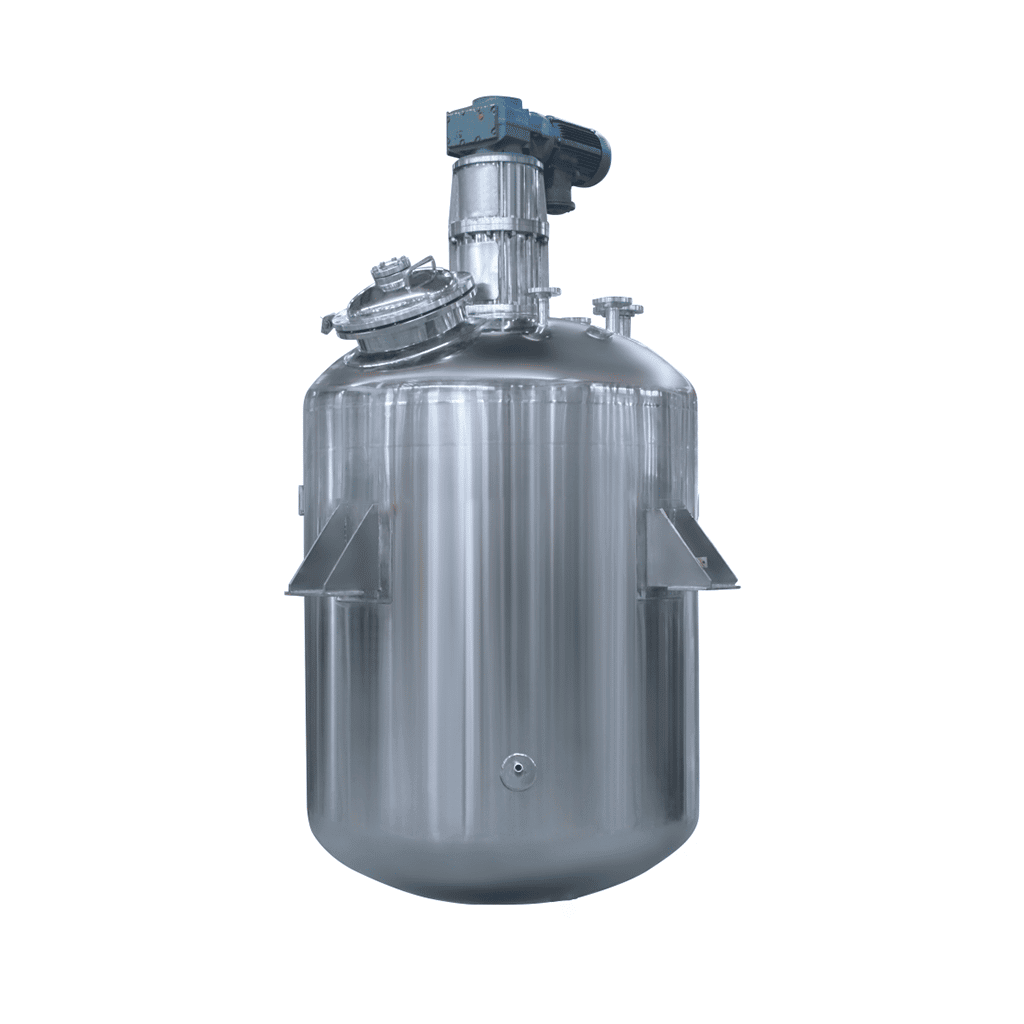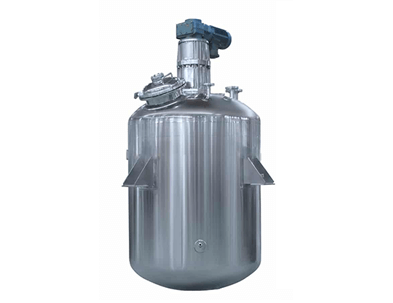
-24-1.jpg)
Stainless Steel Reactor
Stainless Steel Reactor: used in dairy products, sugar, beverages, and other fields
Material
stainless steel (316, 304)
Capacity (L)
10-10000+
Mixing system
anchor, paddle, frame and others
Heating system
electric heating, oil heating and others
A stainless steel reactor is a stainless steel container equipment. The stainless steel reactor consists of a kettle body, a kettle lid, a stirrer, a jacket, a bracket, a transmission device, a shaft seal device, etc. Materials and openings can be made according to user needs and process requirements. Stainless steel reactors are mainly used for stirring, homogenizing, and mixing storage of dairy products, sugar, beverages, food, and various pharmaceuticals.
Request a quoteThe heating and temperature control device of the stainless steel reactor uses the principle of heat exchange to reduce the temperature of the chilled water through the heat exchanger. The refrigeration compressor compresses the high-pressure, high temperature, gaseous refrigerant, which becomes normal temperature liquid refrigerant through heat exchange in the condenser. It is throttled and expanded by the expansion valve to become a low-pressure, low-temperature, gaseous refrigerant. It goes to the evaporator and performs heat exchange to turn the chilled water Temperature reduction requires temperature. Common heating methods for stainless steel reactors include water heating, steam heating, electric heating, and thermal oil heating.

Stainless steel reactor heating method
steam heating
As the name suggests, it uses hot evaporated steam to heat the equipment. The use of steam for stainless steel reactor heating is generally suitable for situations where the temperature control range is large. For example, if this product is easy to precipitate at low temperatures, you can turn on the steam heating slightly. The temperature of the stainless steel reactor is not so easy to control during steam heating. However, after heating with steam, the steam in the jacket turns into water and is easily drained, which facilitates the circulation of refrigerant in the jacket to cool down. Steam heating is used to clean stainless steel reactors and so on. Generally, for chemical reactions above 100 degrees, steam (which will be divided into low-pressure and high-pressure) heating is considered. For those below 100 degrees, we generally recommend the use of water heating. One thing to note when using steam heating is how to heat it evenly.
Thermal oil heating
Different from steam heating, thermal oil heating can evenly heat the stainless steel reactor and control the temperature at a constant level. The materials of thermal oil are silicone oil, base silicone oil, etc. The thermal oil heating method is characterized by high thermal efficiency and lower operating costs than steam heating and electric heating, but its fatal flaw is that it is highly dangerous. Moreover, after the equipment has been running for one year, its heat exchange efficiency will be greatly reduced. At this time, the heat transfer oil and heat exchange pipes need to be replaced.
Electric heating
The electric heating method of a stainless steel reactor is characterized by a clean heat source, easy operation, and many safety protection measures. The disadvantage is that the running cost is higher. The heating temperature of the stainless steel reactor electromagnetic heater can reach 500-550 degrees. The electromagnetic coil is directly wound around the outside of the tank to generate a magnetic field to heat the tank itself, but the coil itself does not generate heat. Coupled with the wrapped thermal insulation layer, the thermal efficiency can reach more than 95% and the service life is more than 15 years. The resistance wire is wound around the insulating layer of the stainless steel reactor body, or installed on a special insulator at a certain distance from the stainless steel reactor so that a small space gap is formed between the resistance wire and the kettle body. Although electric heating has high heating efficiency and fast speed, its energy consumption is too serious.
water heating
For use when the temperature is not high, the heating system is divided into two types: open type and closed type. The open type is the simplest. It consists of a circulation pump, a water tank, a pipe, and a regulator that controls the valve. When high-pressure water is used, the mechanical strength of the equipment requires that the outer surface of the stainless steel reactor be welded with a coiled tube. There is a gap between the coiled tube and the wall of the reactor, resulting in an increase in the thermal resistance of the stainless steel reactor and a reduction in the heat transfer effect.
Daily maintenance of the temperature control device of the stainless steel reactor requires checking the air filter element and coolant level and checking the hoses and all pipe joints for leaks. Check the records. If the consumable parts have reached the replacement cycle, they must be stopped and replaced. When the main engine exhaust temperature reaches or approaches 98°C, the oil cooler must be cleaned. If it is found that the pressure difference of the separator reaches above 0.6 BAR or the pressure difference begins to decrease, the machine should be stopped and the separation core should be replaced. Check the condensate discharge situation. If it is found that the discharge volume is too small or there is no condensate discharge, the water separator must be shut down and cleaned.




